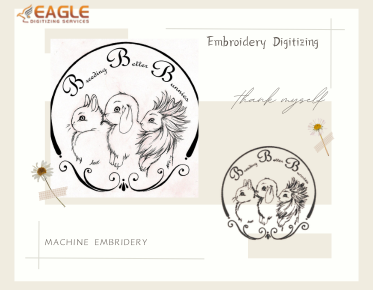Key Strategies for Cost Control and Increasing Profits in Embroidery Digitizing
Embroidery digitizing is a crucial process in the textile and apparel industry, transforming artwork into a digital format that embroidery machines can read. As the demand for customized embroidery grows, businesses in this sector face the dual challenge of controlling costs while increasing profits. This article explores effective strategies to achieve these goals, drawing insights from industry practices and expert recommendations.
Understanding the Cost Structure
Before implementing cost control measures, it's essential to understand the cost structure of embroidery digitizing. Costs typically include software and hardware investments, labor, materials, and overheads. By analyzing these components, businesses can identify areas where savings can be made without compromising quality.
Investing in Technology
One of the most effective ways to control costs is by investing in advanced embroidery digitizing software and equipment. Modern software offers features that streamline the digitizing process, reduce errors, and enhance efficiency. For instance, Eagle Digitizing provides high-quality digitizing services that minimize thread breakage and ensure smooth sew-outs, saving time and materials【4:0†source】.
Optimizing Labor Costs
Labor is a significant cost factor in embroidery digitizing. Training employees to use digitizing software efficiently can reduce the time spent on each project, thereby lowering labor costs. Additionally, outsourcing digitizing tasks to specialized companies like Eagle Digitizing can be a cost-effective solution, as they offer competitive pricing and quick turnaround times【4:0†source】.
Streamlining Operations
Streamlining operations is another critical strategy for cost control. This involves optimizing workflow processes to eliminate bottlenecks and reduce waste. Implementing a robust project management system can help track progress, allocate resources effectively, and ensure timely delivery of projects.
Enhancing Product Quality
While cost control is important, maintaining high product quality is crucial for customer satisfaction and repeat business. Eagle Digitizing emphasizes quality assurance by testing each design before delivery, ensuring it runs perfectly on the client's machine【4:0†source】. High-quality products reduce the need for costly revisions and enhance brand reputation.
Exploring New Markets
To increase profits, businesses should explore new markets and expand their customer base. This can be achieved by offering a diverse range of services, such as 3D puff digitizing and chenille embroidery, which cater to different customer needs【4:3†source】. Additionally, targeting niche markets with specialized services can lead to higher profit margins.
Leveraging Online Platforms
Online platforms provide an excellent opportunity to reach a broader audience and increase sales. Establishing a strong online presence through a well-designed website and active social media engagement can attract new customers. Offering online embroidery digitizing services can also streamline the ordering process and enhance customer convenience.
Implementing Flexible Pricing Strategies
Flexible pricing strategies can help attract a diverse customer base and increase sales. Offering discounts for bulk orders or loyalty programs for repeat customers can incentivize purchases. Eagle Digitizing, for example, provides effective and flexible pricing that adapts to customer needs, making their services accessible to small and midsize businesses【4:0†source】.
Building Strong Customer Relationships
Building strong relationships with customers is essential for long-term success. Providing excellent customer service, as demonstrated by Eagle Digitizing's commitment to live professional support, can enhance customer loyalty and lead to repeat business【4:2†source】. Regularly seeking customer feedback and making improvements based on their suggestions can also strengthen relationships.
Future Trends in Embroidery Digitizing
As technology continues to evolve, the embroidery digitizing industry is likely to see further advancements that can enhance efficiency and reduce costs. Businesses that stay abreast of these trends and adapt their strategies accordingly will be well-positioned to thrive in the competitive market. Exploring automation and artificial intelligence in digitizing processes could be the next frontier for cost control and profit maximization.
In conclusion, by understanding the cost structure, investing in technology, optimizing labor, and exploring new markets, businesses in the embroidery digitizing industry can effectively control costs and increase profits. As the industry evolves, staying informed about emerging trends and continuously improving operations will be key to sustained success.



